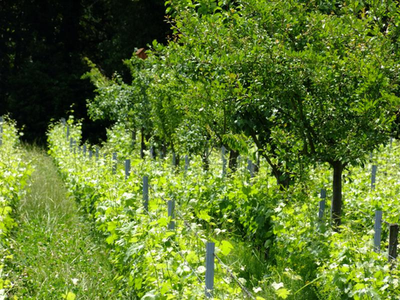Minimum soil disturbance (minimum tillage)

The soil is superficially torn and crumbled with disc and tooth, causing less soil disturbance than conventional tillage, and therefore decreases decomposition of organic matter, increases SOC stocks and decreases GHG emissions.
Crop residue will stay on the surface.
Type of benefit :
- erosion protection
- reduce soil emissions
- promote soil biodiversity
According to (1), minimum tillage decreased vine water potential, biomass and yields, but in one year, minimum tillage decreased N2O emission significantly. According to (2) studied in Mediterranean area, "superficial tillage significantly reduced (4.5 times) soil losses as compared to no-tillage, with a large event-to-event variability. Considering the natural conditions studied by the authors, no-tillage with chemical weeding is not recommended for the study area. Erosion rates observed at catchment scale were significantly lower than those observed at the scale of individual fields. This trend, which has already been observed by many researchers, confirms that catchment soil loss cannot be estimated by the sum of individual field soil losses. In this context, the scaling transition between the field and the 1 km2 catchment can be analyzed in terms of the spatial variability of soil management and connectivity between the sediment-producing and deposition areas."
References:
- https://www.sciencedirect.com/science/article/pii/S0167198717301228
- https://www.sciencedirect.com/science/article/abs/pii/S0167880909002023
Relations
- Network
- List
- Geolocation
- More
University of Nova Gorica
We are an independent, research oriented and student friendly university, where knowledge is created in a harmonious relationship between students and researchers.
- More
ViNOvak - pridelava grozdja in vina
Kakovostna in vrhunska vina iz naravi prijazne pridelave grozdja

